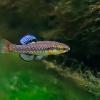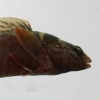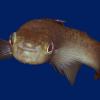Hi everyone! I kept Fundulus cingulatus (I purchased 4 and got 5) in the past and noticed that they were painfully shy. When I was doing research on Fundulus yesterday, I found that at least one species of the genus, F. diaphanus, is a shoaling fish that lives in groups. Is that true of many Fundulus sp? If so, I would likely keep them in a larger group of around 10-12 to see if that helps with the shyness issues. Thanks ![]()

Are Fundulus sp. shoaling fishes?
#1

Posted 03 December 2020 - 10:02 AM
#2

Posted 03 December 2020 - 12:20 PM
I have kept and bred F. cingulatus for several years (as well as several other types of Fundulus species) and have kept them in groups and in pairs. Although they do tend to shoal in the wild, I haven't noticed this behavior nearly as prominently in tanks. I have observed that when the sides and back are covered and there are several mops in the tank (or similar structure) that, like many other fish, they are more comfortable and not as skittish. As a side note, I have a couple of pair of F. notti that were very shy until I recently started supplementing their diet with small floating pellets and they are now not as skittish when I approach the tank (I am not sure if this is generalizable).
#3

Posted 03 December 2020 - 01:10 PM
When they were separated out my olivaceus were super skiddish, but once I put the whole group of about 15 together I could hand feed them
#4

Posted 03 December 2020 - 05:55 PM
Fundulus cingulatus are mean. Not sure how you would have a group of those unless they could run away from each other. F. chysotus are not much better... males will just outright kill other males in a tank.
#5

Posted 03 December 2020 - 06:27 PM
Fundulus cingulatus are mean. Not sure how you would have a group of those unless they could run away from each other. F. chysotus are not much better... males will just outright kill other males in a tank.
Well, THAT would not work too well as a group then...thanks for the heads up
#7

Posted 05 December 2020 - 11:59 AM
I have kept Fundulus cingulatus for about 20 years. I am down to my last female due to a green frog eating all of them except one fry 4-5 years ago while they were spending the summer in my bog pond as mosquito control around my insectivorous plants. That statement is kind of an oxymoron isn't it? Strange but true.
I've been transitioning to red-faced topminnows, F. rubifrons, instead. They look the same and don't require acidic water. They also seem to be less nasty to each other. I have not noticed any male reductions. Males do not normally show any belligerence to each other.
I have had good luck over the years keeping F. cingulatus in well-planted 30 gallon aquaria as long as there are at least a dozen or so fish. The plants were mainly Najas and various species of Cryptocoryne. If the number of fish were eight of fewer, I tended to lose both males and females.
I have kept several species of Fundulus and have found them to be rather easy to see in a tank. They certainly aren't going to come out and ask where the food is like many minnows and sunfish, but they don't seem to hide. They are somewhat retiring, and you have to look to see them, but they normally don't dash into hiding places. I guess you could call that shy. I call that normal.
I initially had some F. chrysotus that were nice to each other without noticeable male killing. Their kids acted the same way, but I lost them several years ago. I have tried them several times since with male killing being a major problem. F. chrysotus that I brought back from the Texas convention seemed to be fine with each other, but I gave them away because of their dull coloration. Based on these experiences, some populations might get along with each other better than others.
I was given some eggs last summer, and I got nine fry from them. So far, I have not seen any intimidation and they swim in a loose group. The two largest ones, males, are each about one and one-quarter inch long. One is melanistic and one is not. I intend to select for the non-melanistic (to each their own, Jconte). I have them in a 15 gallon tank that is heavily planted with Vallisneria to try to avoid male killing.
Phil Nixon
Tolono, IL
#8

Posted 05 December 2020 - 12:26 PM
I have kept Fundulus cingulatus for about 20 years. I am down to my last female due to a green frog eating all of them except one fry 4-5 years ago while they were spending the summer in my bog pond as mosquito control around my insectivorous plants. That statement is kind of an oxymoron isn't it? Strange but true.
I've been transitioning to red-faced topminnows, F. rubifrons, instead. They look the same and don't require acidic water. They also seem to be less nasty to each other. I have not noticed any male reductions. Males do not normally show any belligerence to each other.
I have had good luck over the years keeping F. cingulatus in well-planted 30 gallon aquaria as long as there are at least a dozen or so fish. The plants were mainly Najas and various species of Cryptocoryne. If the number of fish were eight of fewer, I tended to lose both males and females.
I have kept several species of Fundulus and have found them to be rather easy to see in a tank. They certainly aren't going to come out and ask where the food is like many minnows and sunfish, but they don't seem to hide. They are somewhat retiring, and you have to look to see them, but they normally don't dash into hiding places. I guess you could call that shy. I call that normal.
I initially had some F. chrysotus that were nice to each other without noticeable male killing. Their kids acted the same way, but I lost them several years ago. I have tried them several times since with male killing being a major problem. F. chrysotus that I brought back from the Texas convention seemed to be fine with each other, but I gave them away because of their dull coloration. Based on these experiences, some populations might get along with each other better than others.
I was given some eggs last summer, and I got nine fry from them. So far, I have not seen any intimidation and they swim in a loose group. The two largest ones, males, are each about one and one-quarter inch long. One is melanistic and one is not. I intend to select for the non-melanistic (to each their own, Jconte). I have them in a 15 gallon tank that is heavily planted with Vallisneria to try to avoid male killing.
Phil Nixon
Tolono, IL
Good to know. Sadly, my cingulatus were running for cover whenever I approached rather than simply not reacting to my presence...good to know about these Fundulus sp, though. Thanks ![]()
#9

Posted 07 December 2020 - 10:47 AM
Aquarium placement sometimes affects how skittish fish act. Generally, fish in lower tanks where they normally see our legs are more skittish than those in higher tanks that see our faces. Fish tend to be less skittish with more cover in which to hide.
Some groups of fish are just skittish. I currently have three groups of northern redbelly dace. They are all related to each other, having hatched from the same wild-collected school of fish. All three groups number 15-25 individuals in separate 29 and 30 gallon tanks. They are lower positioned tanks in the same water, similar light parameters, and fed the same food, Tetramin flakes. Two groups are fine and school throughout the tank, one group huddled in a mass in one back corner of the tank and hid under the sponge filter. They swam normally in the tank when they couldn't see me. I moved that group to a higher-located tank with more rooted plants and large rocks for cover with the same results, they hid in a tight mass in the back of the tank. After a year of trying, I eventually gave up and put the skittish group into an outdoor garden pond to serve as mosquito control. With their skittish behavior, they are unlikely to end up as raccoon, heron, or kingfisher food.
The Fundulus cingulatus that I've had over the years I would characterize as retiring, but not skittish. They tended to retreat to the back of the tank when I approached, but they were easily seen and not skittish. If you like the species, don't give up on them, but the ones you have now may not change their ways.
Phil Nixon
#10

Posted 11 February 2021 - 03:54 AM
Aquarium placement sometimes affects how skittish fish act. Generally, fish in lower tanks where they normally see our legs are more skittish than those in higher tanks that see our faces. Fish tend to be less skittish with more cover in which to hide.
Some groups of fish are just skittish. I currently have three groups of northern redbelly dace. They are all related to each other, having hatched from the same wild-collected school of fish. All three groups number 15-25 individuals in separate 29 and 30 gallon tanks. They are lower positioned tanks in the same water, similar light parameters, and fed the same food, Tetramin flakes. Two groups are fine and school throughout the tank, one group huddled in a mass in one back corner of the tank and hid under the sponge filter. They swam normally in the tank when they couldn't see me. I moved that group to a higher-located tank with more rooted plants and large rocks for cover with the same results, they hid in a tight mass in the back of the tank. After a year of trying, I eventually gave up and put the skittish group into an outdoor garden pond to serve as mosquito control. With their skittish behavior, they are unlikely to end up as raccoon, heron, or kingfisher food.
The Fundulus cingulatus that I've had over the years I would characterize as retiring, but not skittish. They tended to retreat to the back of the tank when I approached, but they were easily seen and not skittish. If you like the species, don't give up on them, but the ones you have now may not change their ways.
Phil Nixon
OMG! Thank you so much! Also got Fundulus cingulatus(from 4 to 8 now) and they are really and totally skittish. How dumb I was and now I think that the tank on low level matters. Gonna try to change tank's location. I hope that it'd be helpful and thank you again.
#11

Posted 02 August 2021 - 08:26 PM
Dispar males are belligerent towards each other. The dispar females didn’t live as long as the males for some reason.
Both species are prolific breeders and deposit their eggs in moss near the tank bottom. Mine were breeding from May thru end of July.
#12

Posted 03 August 2021 - 08:35 AM
I've kept many of the Fundulus killies and found variation in shoaling behavior and aggression based on size of tank, number of plants and other hiding areas, ratio of males to females as well as feeding frequency and quality. With the many I've had all other factors the same, some groups are just different. So give them the best foods frequently with the largest tank and at least equal sex ratios or female heavy a bit and give it a try.
Mohawk-Hudson Watershed
Schenectady NY
Reply to this topic
0 user(s) are reading this topic
0 members, 0 guests, 0 anonymous users













